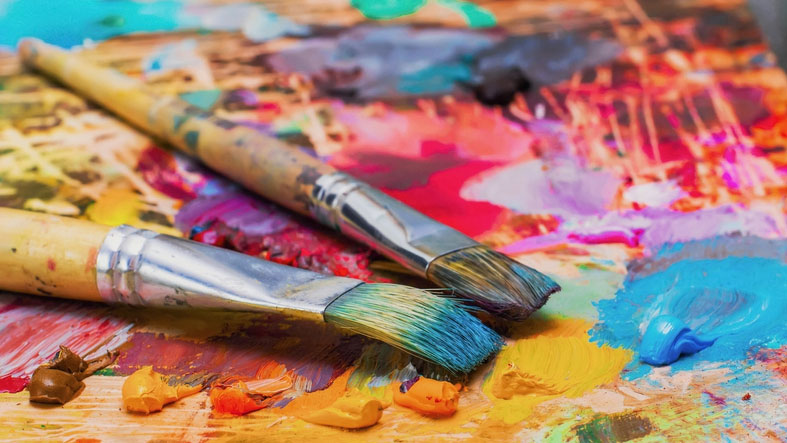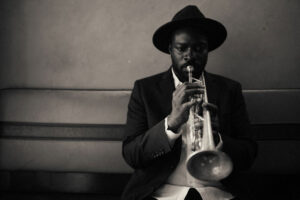

Between these two fields you will find the heart of what it means to study the liberal arts. The hard sciences are where technology and industry emerge. Market forces and hard rules of physics shape that work.
But arts and humanities are where our hearts are at.
- Arts - The creative expressions of human emotion, beauty, and the sublime that provoke and inspire us.
- Humanities - Studies of human culture and society in every era explored through history and creative works.
When we think about what it means to be human, to experience joy and regret, to feel empathy or rage, these are the concepts that reveal those emotions. If you want to understand humanity, this is the concentration you pick in a liberal arts program.
When you choose to pursue a liberal studies degree with a concentration in arts and humanities, you are coming home to the very core of the arts and sciences education.
Arts and Humanities Concentrations Put Together Two Different Paths To Understanding People
 Arts and humanities can be found as a single concentration or as separate specializations at different colleges.
Arts and humanities can be found as a single concentration or as separate specializations at different colleges.
Maybe surprisingly, arts as art isn’t exactly a traditional focus in an arts and sciences curriculum. In the era where liberal arts came of age, artists learned by practicing art, not by going to a university. The arts were closer to trades, where you might serve an apprenticeship or study directly under a master, but there were no formal curriculums for painting or music.
Liberal arts programs routinely expose students to the principles of art and great artistic works, but studying the process and creation of artwork is a recent innovation.
Arts concentrations often split the difference, giving you both a history of the arts and practical experience creating your own works.
Humanities, on the other hand, are and have always been one of the core elements of a liberal arts education. You can think about humanities as being the softer side of psychology. Courses aim to familiarize you with people and the human condition through the ages. The timelessness of emotion, the expressions of beauty and hope through creativity and culture.
What Kind of Curriculum Shapes Your Perception of Arts and Humanities in Liberal Studies?
 The curriculum in arts and humanities concentrations in liberal studies are everything you’ve always imagined a liberal arts degree would involve— explorations of art, creativity, and culture, sometimes with almost microscopic focus.
The curriculum in arts and humanities concentrations in liberal studies are everything you’ve always imagined a liberal arts degree would involve— explorations of art, creativity, and culture, sometimes with almost microscopic focus.
- Want to spend a semester immersed in Jane Austen? No problem. You can even find courses that spend twelve weeks just diving into exploring feminist issues through the lens of Pride and Prejudice.
- Do you enjoy music? Take a semester diving into musical works inspired by war and in peace, comparing and contrasting their harmony and discord across cultural boundaries.
- Do you have thoughts about violence in media? Then you’ll love a class exploring the history of violence in juvenile entertainment ranging from Hansel and Gretel to The Hunger Games.
But any liberal arts degree will include coursework that ensures you get exposure to other aspects of a broad college education. These programs are just as rigorous as any kind of intersectional studies. You’ll have to master more than just painting pretty pictures to get one of these degrees.
Don’t expect to spend your time sitting around fine-tuning color palettes all day long.
You’ll still have coursework in math and science, and learn writing and rhetorical skills for communication and creative problem-solving.
Your arts and humanities concentration will also have certain required courses, but these vary widely from school to school. It all depends on the expertise of the professors and their pedagogical approach to the field. They may root their explorations in the ancient Mediterranean bubble that fostered the origins of the liberal arts, or they may decide to root you in the modern world, with only a few glances back over the shoulder into antiquity.
Your electives will probably be the bulk of your degree, and those come in all flavors:
Literature
For thousands of years, the most permanent and lasting expression of human art and emotion was the written word. Coursework in literature can take you all over the world, in and out of any culture in every era. You will explore society, both in the particulars of the era of the novel, and through modern reflections on older works. Many courses are comparative, offering you different works from different times and asking you to find both the differences and the similarities.
Fine Arts
Art history is a mainstay of liberal arts studies, so you should expect to find plenty of classes in that topic in this concentration. They can be as general as covering a particular era or style, or as focused as diving into a particular artist or school. In arts concentrations, fine arts work may also include some hands-on experience in creativity, exploring what art means by making it yourself.
Music and Performance
Music both provokes and expresses emotion, which makes it a clear subject for arts and humanities studies. You may explore works by particular composers or from certain eras, and how those pieces reflect their time and human experience. Closely related are other performing arts, from drama to dance. As with art courses, you can find combinations of expressive, creative classes in these concentrations as well as purely academic studies.
Philosophy, Religion, and Ethics
World religions and philosophy are important parts of history and pieces of the puzzle that has built today’s world. You can expect to find plenty of classes that explore the connections between philosophy and religion. Ethics, morality, and human behavior go under the microscope as you debate some of the same questions as ancient philosophers and find your own answers.
Cultural Comparisons
Ethnographic studies reveal a lot about humanity, so these concentrations will feature plenty of electives that introduce you to other cultures and the history of your own culture. You’ll draw lessons from history and learn how environment and other factors shape human perception and behavior.
Bachelor’s Liberal Studies Degrees with a Concentration in Arts and Humanities Offer an Overview of the Field
Bachelor’s-level concentrations in arts and humanities tend to be broad-spectrum studies that give you an overview of the fields and spark your interests in certain areas of study. At the four-year level, the main emphasis in liberal arts programs is to develop your foundations of knowledge and to teach you how to think critically.
While you will have plenty of credit hours to pack into electives that you find interesting, the overall goal of these concentrations is to develop your curiosity and capacity for further learning. Your writing and presentation work will cover arts and humanities subjects, but will be used to hone your overall skills in communication for use in any field.






